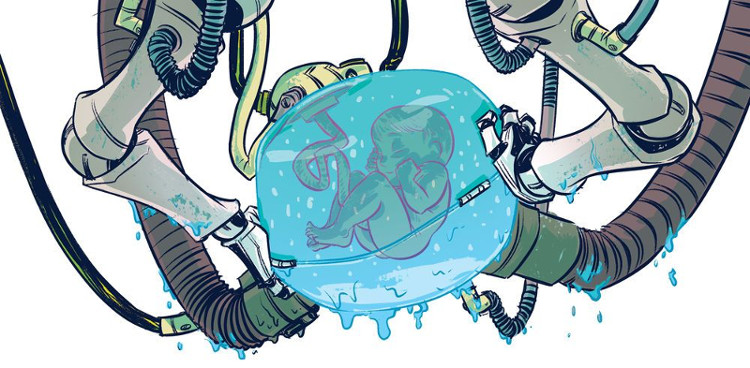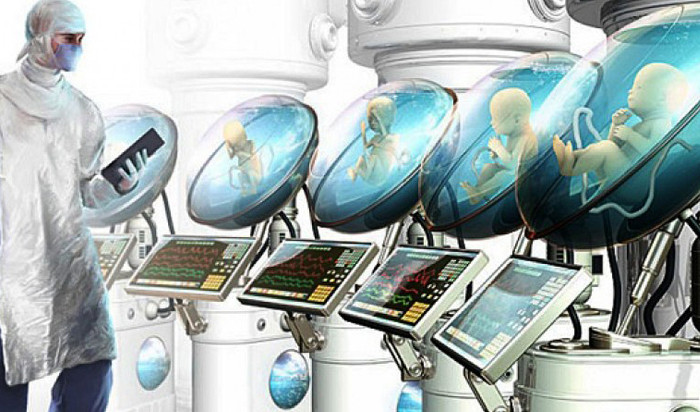The first steps in creating an artificial uterus
This research is revolutionary because it gives us more insight into the process of making people.
During the first two weeks of pregnancy, a woman's pregnancy hormone is too low to produce a positive test result, so it is hard to know if a woman is pregnant.
When we do not observe the inside of the womb, we will not know the process of internal fertilization in progress. We all know that this is the process of embryonic loss of the outer layer and implantation into the lining of the uterus.

The illustration illustrates a baby developed in an artificial uterus.
In May 2016, researchers from Rockefeller University became the first to observe the development of human embryos in the first 13 days. They developed embryos in the lab by providing insulin and nutrients.
Previous attempts have been made on mice in the laboratory. Very few experiments were conducted on primates. The technology used in humans is similar to that of rats, they create artificial insemination in an artificial environment. But must stop after 13 days because of moral issues.
In the beginning, the embryo develops itself according to available genetic materials without sharing information with the mother's body. This result promises a new model for human development and a deeper look at broken fetuses.

People will be mass-produced in the lab in the future?
This is an unexpected result, when the embryo can develop itself even to the point in time it must be implanted in the uterus. This raises the question of whether creating an artificial uterus can develop an embryo? We will let the embryo grow without the mother's actual uterus.
Based on the results of a mouse study, researchers believe that the human embryo will develop itself long-term until it is born. So we have created a person in a completely artificial environment. However, the moral issue should be emphasized, embryo culture is not allowed for more than 14 days.

Embryonic cells are self-developing in the first 14 days.(Photo: Brivanlou lab / Nature).
Currently, only 17 countries in the world abide by international law to ban embryo development beyond 14 days. What happens when the remaining countries will do this longer than the limit? We just hope scientists raise awareness about the problem and use technology in the right way.

The development of embryos in the womb of the mother.(Photo: Brivanlou lab / Nature).
This does not mean we will create babies in the lab, but give us a future of being able to choose the "belly" of our mother. We will gain more knowledge about genetic changes when the embryo is developing, or create new drugs to treat infertility more effectively and help learn more about developmental disabilities.
- Artificial uterus increases the chances of survival for premature babies
- The artificial uterus was successfully tested for the second time
- Artificial wombs help discover embryonic development secrets
- Life is not like we still know?
- Breakthroughs help women who don't have a uterus give birth
- The 200-year-old stone uterus weighs 3kg in England
- America welcomes the first baby born from a mother who has a uterine transplant
- The first baby was born from the donation of the dead
- Artificial meat 'crowned' next 2 years?
- The man has the uterus, ovaries
- Creating artificial ear has superhuman hearing
- Complete the first uterine transplant in the United States
 Green tea cleans teeth better than mouthwash?
Green tea cleans teeth better than mouthwash? Death kiss: This is why you should not let anyone kiss your baby's lips
Death kiss: This is why you should not let anyone kiss your baby's lips What is salmonellosis?
What is salmonellosis? Caution should be exercised when using aloe vera through eating and drinking
Caution should be exercised when using aloe vera through eating and drinking